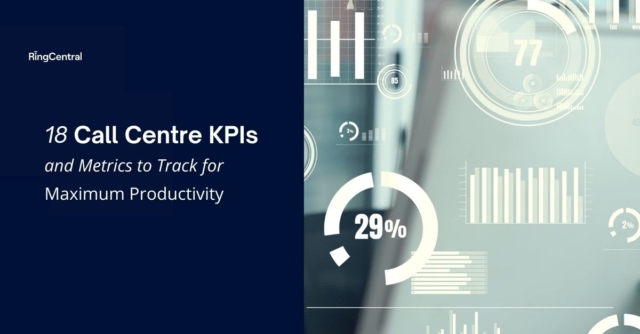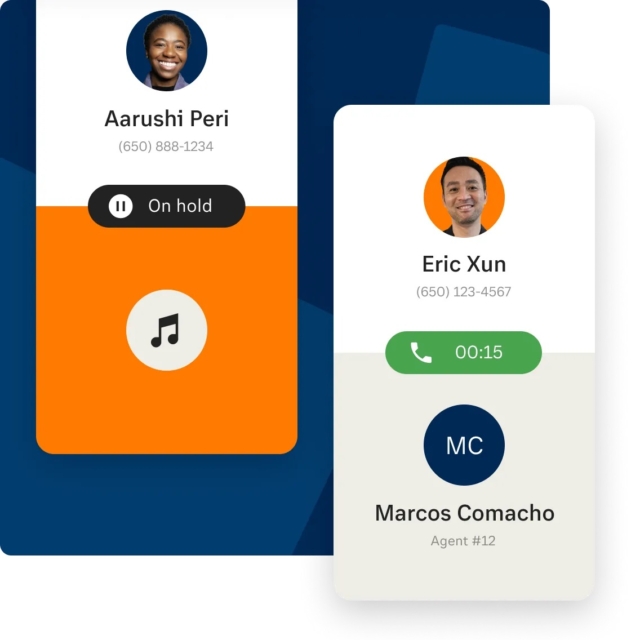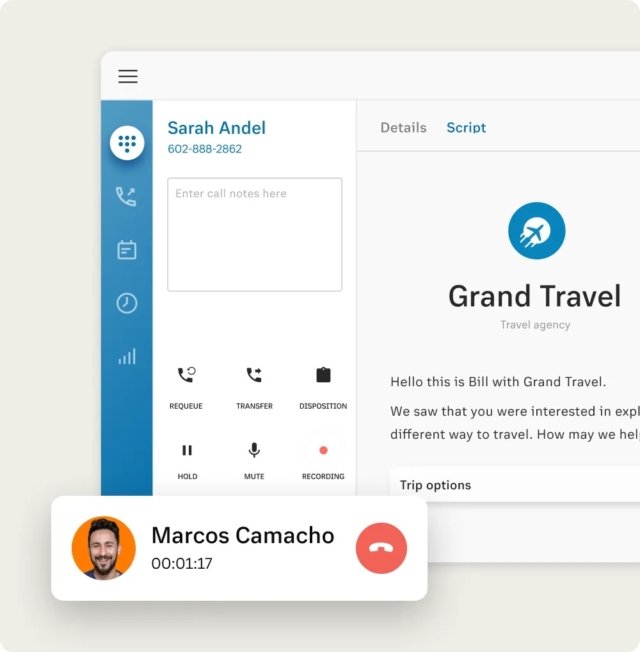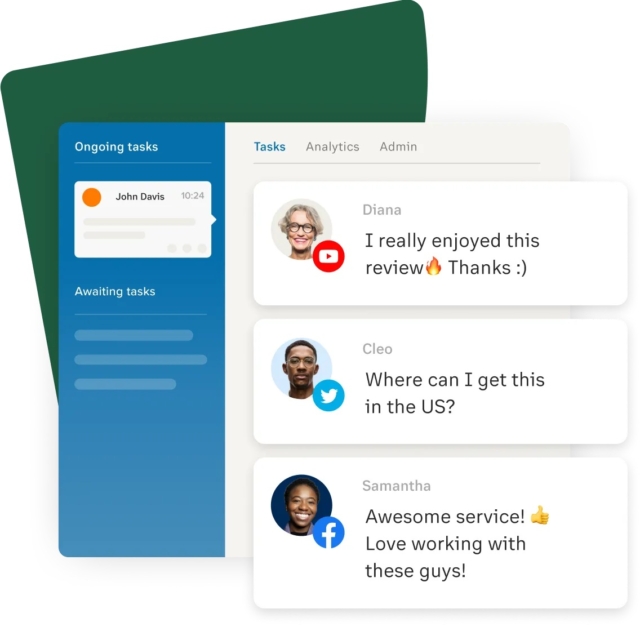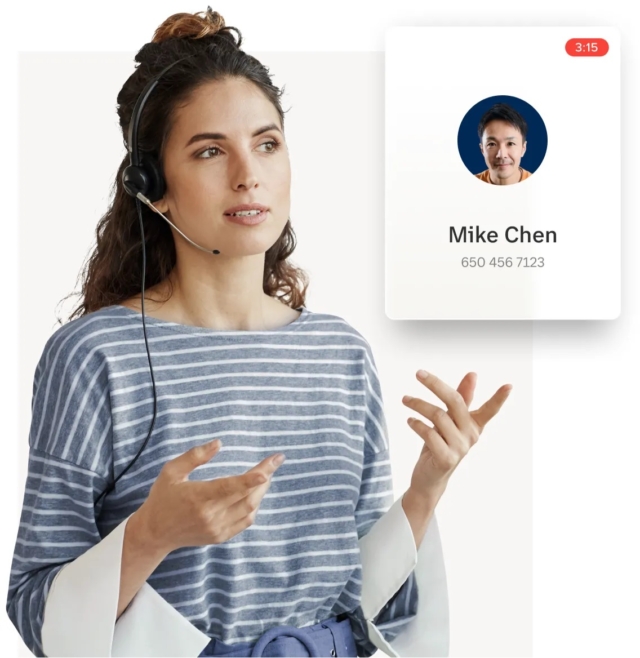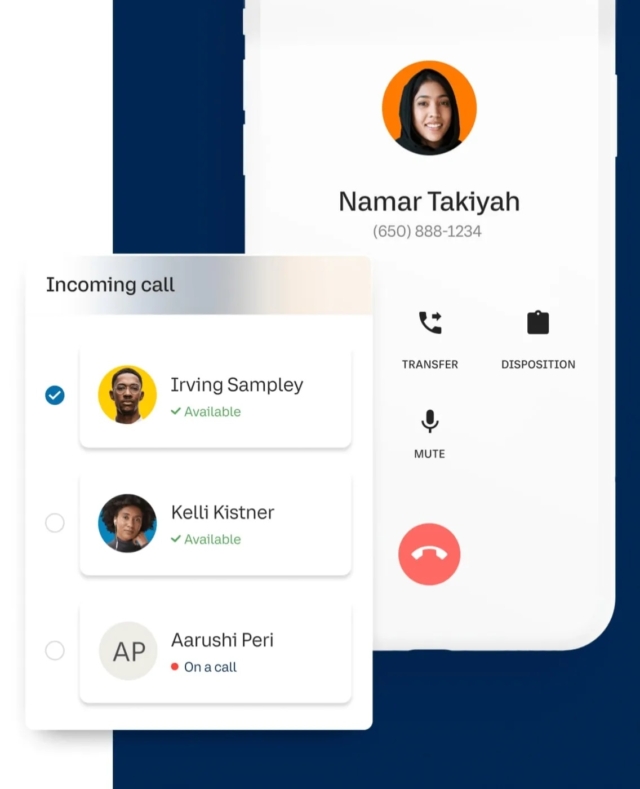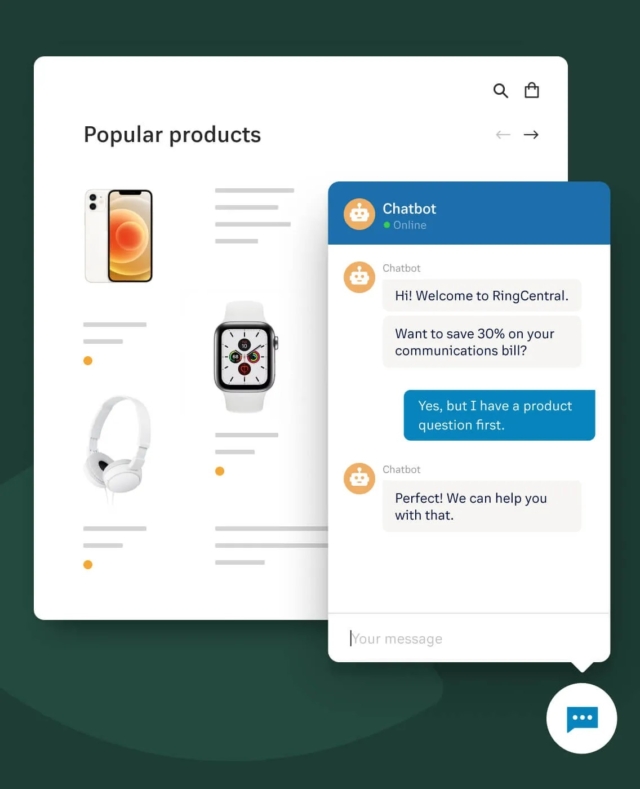18 Call Centre KPIs and Metrics to Track for Maximum Productivity
Call centres have come a long way, especially in the last decade or so. As with many other industries, technology has transformed call centres so that they offer a dynamic and modern service. Gone are the days of long queues or customer frustration at never being connected to an agent who can solve their issue quickly and efficiently.
Of course, all that new technology means managers have more to monitor and oversee. Though even in that area, automated systems make that increased workload easier to manage. However, technology doesn’t work in a vacuum, nor does it do everything for you. Managers and supervisors still need to keep a close eye on performance and statistics to identify areas where changes may need to be made.
In call centres, that ‘close eye’ takes the form of KPIs (key performance indicators). Just what are KPIs, though? How do you decide what ones are most important to you, and what areas of your call centre’s operations do they need to be applied to? Why do you need to track them, and how do you improve them? We look at 18 of the KPIs that you need to use or should consider using.
What are KPIs?
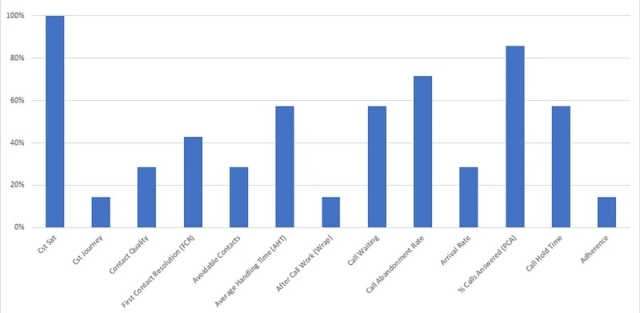
Key performance indicators (KPIs) are ways of measuring performance by your call centre agents and your centre as a whole. They’re usually measured over set timeframes, though call centre managers may collect and analyse KPIs over different periods, including daily, weekly, monthly and annually. Collecting information over different periods can help identify patterns that allow managers to make evidence-based decisions.
You can also apply KPIs to different areas of your call centre according to your particular business model. You may set different targets and benchmarks for different teams within your centre, from inbound calls teams to technical support to finance and accounting teams.
KPIs are useful in call centres as you can use them to set performance targets for your teams to aim for and benchmarks for teams to maintain throughout the year. And, perhaps most importantly, they allow managers to make decisions on future operations, including factors such as hiring new staff or altering scheduling to meet increased needs identified by analysing the data.
One thing to emphasise is that KPIs and metrics are two very different beasts that are often confused with each other. While KPIs can be used to decide on any strategic changes needed as well as ensure that your centre meets the targets you have set, metrics are more about the activities that support your KPIs. For example, a metric could be something like how many people downloaded a free e-book from your website.
Why are KPIs important in a call centre?

There are multiple reasons why you should value KPI tracking and analysis within your call centre, but let’s first consider what the purpose of your call centre is, no matter what industry you’re operating in. The primary raison d’être of your call centre is to provide a method for customers to interact with your company directly, and in this modern age, that usually means offering multiple channels according to the customer’s preference.
While you may have key strategic goals for your business, such as increasing sales or reducing the amount of time agents spend on each call during peak hours, your outward-looking goal is to provide a smooth and painless customer experience in every interaction with your company. By tracking key KPIs, you monitor how well that experience is provided, as well as keep track of your strategic objectives too.
So, while there are many reasons for tracking your KPIs and making strategic decisions based on that data, you could argue that there are four main reasons why KPIs are important to your business:
1. Monitor, track and analyse business objectives’ performance.
While you want to ensure a positive customer experience, your business objectives are what makes your organisation tick. KPIs help you keep those objectives at the centre of any strategic decision-making. As your business objectives can be affected by both internal and external factors, the different KPIs allow you to centralise performance and see what areas are performing well and what areas are falling short.
They also offer a way of communicating current performance to all your staff, allowing them to see not only their contribution to business objectives but also the sum of all contributions.
This also means that staff can see KPIs as more than just numbers. They can also see how they relate to the objectives you’ve set. This can bring your staff together in working towards those objectives rather than just aiming for a set number in relation to a particular KPI.
2. Performance management
Your centre’s performance can be affected by several factors. These can include staff morale, company culture, centre capacity, and standards of training and management. By tracking a range of KPIs, you can manage the performance of your business and make decisions regarding strategic changes when they’re needed.
It also allows you, as a manager, to gauge the performance levels and enables agents to see how their own performance, and that of others, is affecting business performance.
Put simply, KPIs provide transparency on performance that was less available with older methods, such as spreadsheets and written lists. Performance standards can be presented as clear numbers rather than ambiguous details that are not always accessible by all. KPIs have transformed performance management into a process that values transparency and accountability.
3. They help increase agent morale
Staff turnover in call centres can be very high, often averaging between 30 and 45%. A centre with high turnover will see a knock-on effect in agent morale, so managers are constantly seeking ways to improve that morale. It may seem strange to say that KPIs can improve morale, but, combined with your company culture, they can have a major effect on how staff feel about their job.
If you build a company culture that not only values your agents’ work but also offers support and motivation, then you can both improve morale and reduce turnover. In this area, you can use KPIs to recognise the work done by your agents as well as make them feel accountable and responsible rather than just being another ‘cog in the machine’.
By making them feel responsible, you’re emphasising that you value their contribution to the centre’s performance as a whole.
4. Contributes to personal growth
The reality of running a call centre is that you’ll not always meet targets. However, being able to track performance, such as the specific time spent on each call, and then compare to your targets (whether that performance has fallen short of or surpassed targets) allows you to foster an environment in your centre that fosters personal growth and also allows learning.
As many KPIs are updated and accessible in real time, agents and teams can see snapshots of their performance at any time. Throw in some of those advantages of tech, such as real-time coaching, and you have an environment where agents can learn and grow, both by themselves and with the help of managers and supervisors. This can also contribute to their morale as they have more control of, and responsibility for, their own performance.
Challenges in choosing the right call centre KPIs
Modern contact centres are complex environments that often include multiple departments working in different areas and towards different objectives. That means it can be a real challenge when deciding what KPIs to use, both for the centre as a whole and for individual departments.
It’s not a case of a ‘one size fits all’ policy but rather finding a balance between the data that helps you make decisions and having too many KPIs that could overload your managers and staff.
A. Setting feasible KPIs
When we talk about feasibility, we mean how easy (or difficult) it is to access and collect the data we need to measure something accurately. Technology has made the collection of data easier than ever.
For example, companies such as RingCentral have tools that let us access a lot of data, such as the average time of incoming calls or customer satisfaction. Data about customer satisfaction is obtained through automated surveys or by asking a simple question at the end of the call.
You need to decide which KPIs are most important to you, and that may vary according to your business model. A centre that’s geared towards sales is going to want accurate data on conversion rates, while a centre that primarily offers customer support is going to value first contact resolution (FCR). Once you’ve prioritised your KPIs, you can then look at the feasibility of collecting each.
B. Setting KPIs between different departments
As already mentioned, different areas of call centre work will prioritise different KPIs. If you operate a multidisciplinary contact centre, then you need to decide which KPIs to set for your different departments. Thinking about what you expect from your various departments and what their goals and objectives are can help you decide what KPIs you should set for each.
It may well be the case that you want to assign the same or similar sets of KPIs to each department. However, you may also decide that different departments may have different priorities when it comes to those KPIs. One department may have average response time as their primary KPI, while another may be more focused on FCR.
5 Industry standards for call centre KPIs
One question that’s often asked is, “How do call centre managers set KPI targets, such as after call work time or call transfer rate?”. This can be especially true when it comes to a new call centre that has no historical data to use as a baseline. For new and existing centres, that baseline is often created by looking at industry standards for those KPIs.
Customer experience
1. First call resolution (FCR)
Customers don’t want to have to make multiple calls (or even be transferred between several agents) to have their problem solved or their query answered. In fact, some 93% of callers want their calls resolved in a single call. However, the reality is that it’s an almost impossible target and actual industry standards average around 70-75%, with world-class rates being 80% or higher.
If your FCR is below 70%, then it’s an area that needs to be addressed. For many contact centres, particularly those focused on customer support services, this is a key metric when it comes to measuring performance. Maintaining a good FCR rate means higher levels of customer satisfaction through meeting customer needs, fewer repeat calls, and also lower overall costs.
2. Customer Effort Score (CES)
CES is similar to NPS (net promoter score) in that it uses a single question in order to measure customer satisfaction. That question asks customers how much effort it took them in order to get their question answered or their problem resolved. Ideally, you want the response to be that it took very little effort to solve their issue or answer their question. If it took a lot of effort, then you need to examine your processes and how to improve them.
CES is usually measured with either a five-point or seven-point scale. The single question is often something based on a statement, such as ‘The organisation made it simple for me to resolve my problem.’, with responses on a sliding scale with ‘strongly disagree’ as option one leading to option five or seven as ‘strongly agree’. As a benchmark, you should be looking at an average score of five or more.
3. Customer satisfaction (CSAT)
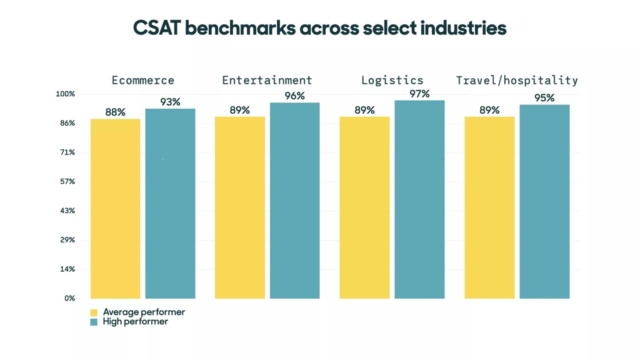
This is perhaps the most commonly used contact centre KPI when it comes to measuring customer satisfaction. This can be aimed at either products or services or combined as both. It’s regularly included as the final question in a customer survey, but some call centres may use it as a simple question at the end of a call. CSAT scores are typically measured on a five-point scale, with responses ranging from ‘Highly satisfied’ to ‘Highly unsatisfied’.
Once data has been collected, it’s usually converted into a percentage. But only the two highest scores (four and five) are used in the calculation. So, you take the total number of those two scores, divide by the total number of times it was asked, and multiply by 100 to get your percentage. Industry standards can vary greatly depending on the industry. 25% upwards can be viewed as good, while 50% upwar08ds can be viewed as excellent.
4. Net Promoter Score (NPS)
This KPI is particularly common with companies geared towards sales, such as ecommerce businesses. While it still measures customer satisfaction to an extent, it focuses more on customer loyalty and customer retention, but it can also act as an indicator of how likely customers are to become brand ambassadors for your business.
It’s also popular because it relies on one simple question, which is ‘How likely is it that you would recommend this business to a friend or family member?’. Scoring is done on a scale of 0-10, and responses are then grouped into the following three categories:
- Promoters: A score of nine or ten.
- Passives: A score of seven or eight.
- Detractors: A score between zero and six.
To obtain your NPS, you simply subtract the percentage of detractors from the percentage of promoters. Again, industry standards can vary greatly, but an excellent NPS score would be 30 or more.
Agent productivity
1. Average Speed of Answer (ASA)
This is a very important metric as it gauges how long agents take to answer calls. If this metric is too high, it could be due to one of several factors, such as:
- Agents taking too long on existing calls
- Agents not being responsive enough to waiting calls
- Your service level or staffing and scheduling aren’t sufficient for the number of customer calls your centre is receiving
The benchmark you should be aiming for is 28-30 seconds.
Long waiting times can directly affect your call abandonment rate, but, perhaps more importantly, you could lose customers altogether. It’s worth noting that some 60% of customers think that one minute is too long to wait. If your average speed of answer is high, then it can be addressed in a number of ways, including coaching sessions, schedule changes, and implementing new tools, such as callbacks.
2. Average Handle Time (AHT)
You start measuring AHT from the moment an agent connects with a customer to the point the call ends. This is a metric that may again vary according to the department; after all, some calls are easier to deal with than others. You may choose to measure the amount of time spent on each call for each department in your centre, but the industry average for call length is around six minutes and three seconds.
Tracking AHT across your centre can help identify if particular teams or agents are struggling to meet the benchmark you’ve chosen to set. Agents who are taking longer than the average talk time may need additional coaching. But you can also use the data to identify agents who are far quicker than the average as this may be an issue too as they could be rushing calls.
3. Tools utilisation
In the modern call centre, there are multiple tools available to agents in order to improve the service they offer and to help with other KPIs. When agents use the whole suite of tools available to them, not only are they offering a better customer experience, but it can directly affect call centre metrics, such as first call resolution rate and average handling time.
If you find that your agents aren’t utilising all the tools available to them, then it’s usually an indicator that they require additional coaching. It may also indicate that they don’t know how to use tools such as CRM (customer relationship management) properly. You can also choose to have regular training, or refresher training, on using the most common tools in your centre.
Call initiation metrics
1. Call Abandonment Rate (CAR)
As alluded to earlier, call abandonment can be directly related to ASA and happens when a customer hangs up before their call is answered, often due to long wait times. Generally speaking, if you have an average abandonment rate of more than 5%, then you need to address some underlying issues.
A high CAR means that you’re losing out on opportunities and potential revenue but also that customers are unhappy with their hold time, which can damage your organisation’s reputation.
A high CAR could be the result of something as simple as not scheduling enough agents when your centre is experiencing high call volumes. Your call volume can fluctuate seasonally, during special campaigns, or even on certain days of the week (and peak times). While better scheduling is one solution, you should also be looking at whether tech, such as IVR or offering callback options, can reduce your abandonment rates.
2. First Response Time (FRT)
We’ve all experienced those frustrating waits for our contact to be responded to. First response time is a KPI that measures those waits. It looks at how long a customer waits on average for their initial contact to be responded to by an available agent. In most cases, this KPI is monitored on a daily and weekly basis, but managers will also look at annual patterns.
Where FRT widens its scope is that it deals with any type of contact where a centre offers omnichannel contact, so the industry standards can vary according to the type of contact. Depending on the channels you offer, these can act as rough guides as to the benchmarks you should be setting:
- Email: all emails should be answered within around four hours
- Live chat: 80% of live chat requests should be responded to within 20 seconds
- Social media: this can vary greatly, but centres should aim to respond to all queries within an hour
- SMS and messaging apps: you should be replying to 80% of these messages within 40 seconds
3. Waiting calls on queue
Also referred to as active waiting calls, this metric gives managers a real-time overview of how many calls are active with agents and how many are on hold. This is mainly used in day-to-day call centre operations and can help managers gauge the call centre performance as a whole as well as the agent performance in different teams. It can be an indicator of agent efficiency and can affect both call abandonment rates and average response times.
4. Percentage of calls blocked
While perhaps not the most important of KPIs, managers should still be checking on this one as it refers to how many of your customers received a busy tone when they called your number. This should be a very low figure, ideally around 2% or so. If you find you have a high number of blocked calls, you may need to look at the system you’re using and also consider tools such as IVR and callbacks.
Call centre operational metrics
1. Number of calls handled
This KPI will be monitored in different ways. Centre managers and supervisors will look at daily patterns, while at C-Suite level, it will be looked at over a longer time frame. Your managers may use daily trends to decide on scheduling and coaching, and at C-Suite level, it may be used for strategic decisions, such as hiring extra staff or purchasing new equipment or tools.
2. Cost per Call (CPC)
At the end of the day, you want your call centre to be profitable, and that makes this a crucial KPI to monitor. CPC looks at what your average costs are for all calls received (or made). What you need to remember is that costs include ALL costs incurred by your business. That means all salaries, recruitment and training costs, and all overheads, including power, office rent, and all IT needs, such as the purchase of phone systems and related tools.
Once you’ve your total costs for a set period of time, then you also need to look at the total call volume for that period. Once you’ve both figures, calculating your CPC is simple; just divide your total costs by your total number of calls. That calculation gives you your centre’s CPC.
3. Average call time
This is a KPI that can vary greatly according to industry type and department role. For example, an account query will likely take a shorter call than a tech support query that may be more involved. You calculate it by dividing the total time for all calls by the total number of calls. You may choose to break that down by team or department if you recognise there is a wide variation.
4. Call arrival rate
This is another KPI that will be looked at in different ways. Call centre managers and supervisors will monitor it on a daily basis, while your C-Suite will look at longer-term trends. It’s a basic KPI that examines how many calls you receive in a given timeframe. Monitoring may also depend on the size of the centre; larger centres may monitor it hourly (or even by the minute), while a smaller centre may monitor it on a daily basis.
5. Average unresolved calls
While many centres focus on achieving a good FCR, an often forgotten KPI is the percentage of unresolved calls. A survey by SQM showed that 12% of calls are unresolved at the average call centre.
This matters because, when you have unresolved calls, as many as 25% of those customers may choose to look elsewhere for service. Addressing the reasons for unresolved calls is essential for managers, especially when you consider that customer retention is cheaper than customer acquisition.
Occupancy rate
1. Absenteeism
At the end of the day, absent agents can cause many issues, especially when it’s unplanned. But what actually constitutes absenteeism in a call centre? It doesn’t include things such as planned and paid leave or jury duty. However, it can cover the following absences:
- Both authorised and unauthorised sick leave of any type
- Unexplained leave
- Appointments with doctors, dentists, etc.
- Lateness due to a variety of reasons (e.g. transport issues, home emergencies)
- Family emergencies, including childcare issues
Most call centres look at absenteeism over a whole year, though, of course, if an agent has multiple incidences of absenteeism in a short-term period, managers may investigate. This can be a difficult KPI to calculate due to the various factors affecting it.
2. Turnover rate
As already mentioned, turnover rates are a major issue in the call centre industry, with figures as high as 45%. If your turnover rates are high, then it can have a major effect on your operations in a number of areas. Not only do you face the additional costs of recruiting, onboarding, and training new agents, but it can also have a detrimental effect on overall staff morale.
In the short term, unexpected turnover can play havoc with your scheduling, as you may be left with fewer agents than you need. While there may be no definitive ‘cure’ to agent turnover, there are steps you can take to mitigate higher rates of turnover:
- Perform a thorough recruitment process that identifies the right people for the job
- Offer a good salary, overtime, and bonus structure. If you offer less than competitors, then you will lose agents
- Set out clear objectives for roles, including regular feedback
- Offer regular coaching, training, and refresher courses
- Ensure that there are opportunities for career progression
How can RingCentral help you improve your contact centre services?
There are two main factors that contribute to running a successful call centre. One is having the right staff combined with great training and high levels of support. The other is the systems and tools you equip those agents with. With so many solutions available on the market, why should you choose RingCentral above the other solutions?
What is RingCentral?
RingCentral is a simple contact centre solution that offers you complexity without confusion. With the seamless ability to connect your customers with your agents across a wide range of channels, it offers you the chance to take your call centre operations up a level and improve the efficiency and productivity of all your agents while improving customer satisfaction.
Standout features
When you’re considering a new contact centre solution, the first thing you’re going to consider is the features any system offers you. RingCentral offers all the features you need with some left over. The standout features include:
1. Routing
Customise your systems routing so that customers are connected quickly and agents are best placed to solve customer issues. Skills-based routing ensures your agents with specialised skills and experience can be connected with customers who need that help. This can have a positive effect on some of your most important KPIs, such as first call resolution, customer satisfaction scores, and average handling time.
2. Easy agent management
With a simple and intuitive dashboard, managing your staff has never been easier. You can easily monitor agents and teams, optimise your scheduling, carry out coaching with little effort, and even ‘barge’ in on calls when an agent is struggling. This can help with quality assurance across your centre and increase efficiency when it comes to agent utilisation.
3. Insightful analytics
With RingCentral, you’ve access to all the analytics you’ll ever need. Whether you want to track calls and data in real time or look at performance over different time periods, the RingCentral system makes it easy to access that data and to degenerate reports. With such wide-ranging data, it means you can make decisions in real time to tweak the performance of teams and agents.
4. Integrations
A modern contact centre may utilise many tools to provide efficient service. These can include tools such as CRM (customer relationship management), which allows your agents to see all previous interactions a customer may have had with your centre. RingCentral allows for easy integration with all your favourite tools, including Zendesk, Salesforce, and many others.
5. Advanced automation
Automation and AI have been real game-changers for the call centre industry. RingCentral offers a range of AI-powered automated options to make your customers’ journeys smoother. These include IVR to identify where to best route a call, self-service options, virtual hold and callback options to reduce call abandonment and waiting times, and chatbots that can handle simple queries or pass more complex queries to an agent to follow up.
6. Advanced dialing options
If you operate any outbound campaigns, RingCentral offers all the dialing options needed to make your campaigns a success. You can choose from predictive, proactive, and progressive diallers as needed for different campaigns and can also choose blended options where callbacks are prioritised over other calls to improve your outcomes.
7. Plans and pricing to suit you
RingCentral recognises that call centres operate at different levels but also that there can often be the need for scalability at short notice. That’s why they offer a range of plans that suits every size of centre and allows you to scale up or down as needed.
8. Omnichannel options
Gone are the days when customers could only contact you by phone. In the modern era, you need to recognise that customers may want to contact you via different channels, such as live chat, email, SMS, and social media. RingCentral offers omnichannel options to enhance customer interaction and help your agents to improve the customer journey.
9. Workforce management (WFM) and workforce optimisation
Rather than jumping between apps and systems, RingCentral offers you Workforce Optimisation Pro, a centralised tool that lets you access all relevant applications from one source, meaning you can manage all tasks from reducing churn to maximising coverage in busy periods. This means you can manage every aspect of your workflow more efficiently than ever before.
Take your customer experience to the next level
With so many great features on offer, the only question you may end up asking is why you didn’t switch to RingCentral previously. Many customers view it as the best call centre software available that can have a tangible and positive effect on all the vital KPIs. When you’re focused on efficiency and providing a great customer experience, then you need a solution that steps up to the mark.
KPIs are the ideal way to monitor the performance of both your agents and your centre as a whole. However, if you’re currently using multiple apps and tools to track those KPIs, then it can be a complex task, and you may be giving yourself more work than necessary. Switching to RingCentral simplifies those tasks while giving you more actionable insights.
Originally published Jul 07, 2022, updated Feb 12, 2024

